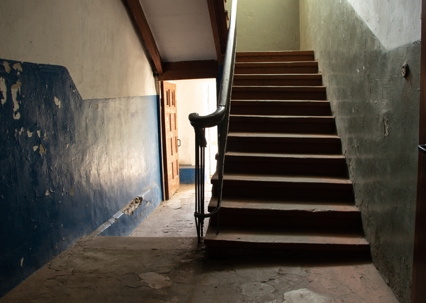Property owners are legally responsible for maintaining safe conditions for anyone on their premises. When unsafe staircases and poor lighting are overlooked, the consequences can be severe, leading to injuries—and property neglect lawsuits. These seemingly minor issues can result in life-altering accidents, from devastating falls to serious trips, leaving victims to deal with physical pain, financial strain, and emotional stress. Knowing how these hazards lead to legal action and how property owners can avoid such situations is crucial for all parties involved.
How Unsafe Staircases and Poor Lighting Cause Injuries
People rely on staircases daily to safely move from one level to another, whether at home, work, or public venues. However, when stairways are poorly maintained, they create significant risks. Paired with inadequate lighting, the dangers multiply.
- Broken or Loose Steps – Cracks, loose boards, or missing sections can cause people to trip or lose their balance.
- Worn-Out Railings – Handrails that wobble or detach unexpectedly offer little support, particularly when someone is trying to steady themselves.
- Improper Step Dimensions – Uneven step heights or depths can lead to missteps, especially for individuals with mobility issues.
- Dim or Nonexistent Lighting – Poorly lit staircases make it nearly impossible to identify hazards, resulting in avoidable accidents.
When these issues are not addressed, victims may suffer serious injuries like broken bones, head trauma, or spinal damage, triggering potential property neglect lawsuits.
Legal Consequences of Unsafe Conditions
Under premises liability laws, property owners must keep their spaces reasonably safe for visitors, tenants, or employees. Failing to maintain safe staircases or providing adequate lighting can lead to legal consequences for negligence. Here's how:
1. Duty of Care
Property owners owe a duty of care to ensure their premises are free from hazards. This applies to residential buildings, commercial spaces, and rental properties. If someone is harmed due to unsafe staircases or inadequate lighting, the owner can be held accountable for failing to meet that duty.
2. Proving Negligence
Victims must show that the property owner was negligent and that the unsafe condition directly caused their injury. For example, if poor lighting prevented someone from noticing a broken step, it becomes clear how the owner's inattention played a critical role.
3. Compensation for Damages
If a lawsuit is successful, the owner may be required to compensate the injured party for a range of damages, including:
- Medical Expenses – Covering doctor visits, surgeries, physical therapy, and ongoing treatment.
- Lost Wages – Reimbursement for time missed at work due to the injury.
- Pain and Suffering – Compensation for the physical and emotional toll of the incident.
These cases can be particularly damaging to property owners, leading to financial loss and reputational harm.
Examples of Property Neglect Lawsuits
Examples of such cases highlight just how serious these issues are:
- Tenant Injury from a Decayed Staircase—A tenant in a rental property sustained a broken leg after falling through a rotted wooden step. It was revealed that the landlord ignored prior complaints about the staircase’s condition, resulting in a successful lawsuit for negligence.
- Slip and Fall at a Dimly Lit Entryway—A customer sued a business owner after tripping over uneven stairs at an unlit entrance. Security footage confirmed the lighting had been out for weeks without repair, proving negligence.
Such lawsuits are a wake-up call for property owners who fail to promptly address hazards.
Tips for Property Owners to Avoid Lawsuits
Being proactive can save you time, stress, and costly litigation if you're a property owner. Adopting these measures helps ensure safety for all who use your property.
1. Perform Regular Inspections
Conduct frequent walk-throughs of your property to identify potential hazards. Check staircases, railings, and lighting fixtures for issues.
2. Address Repairs Immediately
Ignoring small problems can make them worse. Replace broken steps, secure loose railings, and fix lighting promptly to prevent accidents.
3. Follow Building Codes
Ensure your property meets local safety codes. Staircases should have consistent step dimensions, adequate support, and proper lighting as outlined by regulations.
4. Install Adequate Lighting
Use bright, energy-efficient lighting for staircases, entryways, and hallways. Motion-sensor lights are particularly useful for spaces that are often walked through in darkness.
5. Document Your Efforts
Keep records of inspections, maintenance, and repairs. If an incident does occur, having proof of your diligence can help you during legal proceedings.
6. Consult Professionals
Work with contractors and safety experts to evaluate your property’s condition and address areas of concern. Periodic audits can assure compliance with safety standards.
Premises Liability Attorney in Agoura Hills - Get Justice Now
If you're a property owner in Agoura Hills, CA, and are concerned about potential legal challenges related to property neglect, don't hesitate to reach out to Effres & Effres. Our experienced team of personal injury lawyers can provide you with the guidance and representation you need to navigate these complex issues. Contact us today at (818) 222-9720 to learn more about how we can help you protect your property and ensure the safety of your tenants and visitors.

